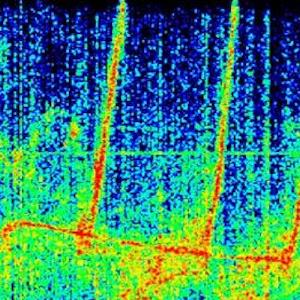Kesarbai Kerkar was born in Querim Goa in 1892. Then colonized by the Portuguese, in 1902 her parents migrated to Maharashtra, in search of better livelihood. Her mother encouraged her to sing from an early age. She picked up her singing lessons in Kohlapur, with local meastro Abdul Karim Khan. In 1911 Kesarbai's father opted to move to Bombay, a rapidly growing city - the British empire's leading port. At this point Kesarbai faced the usual pressure to get married. Having ritually followed ten years of formal training, she insisted on moving to Jaipur to study further. She pledged to learn from Ustad Alladiya Khan, the founder of the Jaipur-Atrauli Gharana. Twelve years later, Kesarbai would begin singing professionally, however staying close to her teacher, who suffered prolonged illness, leading to his death in 1946. Her concerts (1931-1941) were patronized by imperial visitors, small maharajas, the business class and petty royalty. She abstained from light classical, and the "mehfil" culture. 1947, at the brink India's independence, Kesarbai appeared in Bombay, about to step into a male dominated classical music sorority. Her insuperable command of the Khayal, backed by almost two decades of training, reached an urban audience, with performances on radio and record pressings by HMV (1949-54).
During one such session in 1950, she sang "Jaat kahan ho" (Where do you wander) which was pressed to limited copies of vinyl. Renowned ethnomusicologist Robert E Brown searched the record for years, insisting that Kesarbai's voice was of utmost value and character. Kesarbai remained unaware of Brown's quest and the fate of her tune all her remaining life. Brown remained clueless about the meaning of the lyrics. After receiving key national awards and being titled "Surashri" (excellent voice), Kesarbai retired, moving back to her native village in 1967. Ironic that in 1968 a copy of the record was finally located, inside a hardware store run by an migrant Indian family, living in Lexington Avenue New York. The migrants had come from one world to another, carrying their music and memories. Music travels from one land to another, and a little tune, can cross an unimaginable distance, having left it's native ecosystem long ago. Where do you wander?

Kerkar became an accomplished Khayal singer, winning national awards and stipends towards the end of her life. In ways, she charted new spaces for female classical singers to come. Singers such as Mogubai Kurdikar (mother of Kishori Amonkar) and later in the mid-1970s Hirabai Barodekar and Gangubai Hangal. Kerkar's following generation was heard on national holidays, TV and radio, away from singing 'mehfils' or private gathering that women of previous generation had to settle for. Her legacy still resonates back in her village in Goa, in a meager but resilient way, as the Surashree Kesarbai Kerkar High School and an annual festival of classical music. Querim remains nested in a time warp, still unstained from tourism. The cultural voyage made by Kesarbai's voice, the migration and the Golden Disc is mostly forgotten, not audible in Goa's music heritage, steadily proliferated by imported music for decades now. "That Khayal, revered as the form is, transcended into vinyl and as a format and memory was shipped to a new continent... was lost and found... and made it on an interstellar space trip, which is yet to end... A Khayal as a ghost, out there 14 billion kilometers away... pretty amazing if you think of the timeline of the artist, the spacecraft and possibility of intelligent life, which might listen to the music out there..." states Monica Narula (Raqs Media Collective).




























0 -